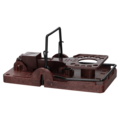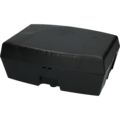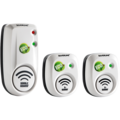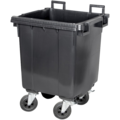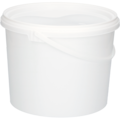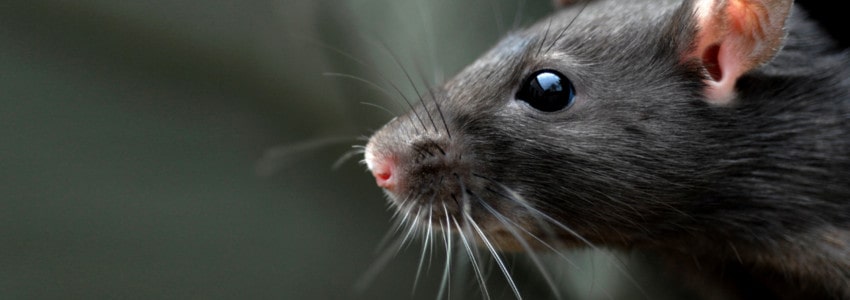
Pest Guide: Rats.
The species (Rattus norvegicus) "the brown rat" is the species that is most common in Sweden today. It is characterized by its coarse fur that varies between dark brown and gray-brown color. An adult rat is about 45 cm including the tail and normally weighs between 250-300 grams. Rats occur near us humans, where food is found. Their nest consists of small collected fragments of, for example, paper, plastic and builds nests in humid environments. They are omnivorous and feed on residual waste, garbage but above all grain products. With the help of their flexible body and large front teeth, they move easily and are good at creating aisles. We will go through why you should fight rats, how to detect them and how you can counteract the presence of rats.
Why fight rats?
The main reason for fighting the pests is to minimize the risk of infection spreading. Rats spread infection through urine and feces, such as salmonella, which is the cause of severe cases of food poisoning. It is also not uncommon for them to cause damage to objects and electrical cables. Rats reproduce very quickly, a female gets an average of 3-5 litters a year, which means more than 100 pups in a year. It is therefore of great importance to gain control of the pests in time.
Signs of problems with rats
There are several ways to identify and detect if you have problems with rats. Below we have listed clear signs of how to detect rats in and around your property.
- Droppings - Be vigilant if you find dark brown droppings in oblong shape like a large risk. The droppings often occur in small quantities in places separate from where they normally move
- Sound - distinctive sounds can be strong gnawing as well as loud noises, scratching sounds and climbing noises. Rats are most active at night
- Rubber marks - usually along moldings, walls and other larger objects
- Rodent marks - approx. 3 mm wide. Check for holes in food packaging and more
- Rat holes and passages - if you find this, it is a sign that the rats have established themselves
- Tip - place tracking powder along skirting boards to detect footprints
How to avoid rats
Rats are everywhere and can find their way to most areas where it is beneficial for them to establish themselves. Some activities are more vulnerable than others, but there are ways that minimize the risk of receiving unexpected visits from rats. The following measures are recommended to be used for preventive purposes.
- Make sure that the drainage system, floor drains and water traps are intact and tight
- Seal valves, in house foundations and cracks with the help of sealing compound or other sealing products such as sealing nets and steel wool.
- Avoid storage directly on the ground and use plastic boxes that protect against attack
- Seal bins tightly and avoid placing soups directly on the ground
- Keep all surfaces clean, both indoors and outdoors
How to get rid of rats
No matter how large the scope is, it is advantageous to use a combination of measures to gain quick control of the pest. We have listed some of the most important methods below.
- Once you have identified the entrance, you should set traps to catch the rats
- Clog holes and cracks with sealing products or sealant and sealing wool
- Use ultrasound detectors specially designed for rats to scare them away
- Traps such as blow traps, electric traps and cages for live capture of rats. The trap should be placed on a wall near where the rats live and where they find their food. Leave the traps in the same place for about 2-4 weeks
- With the help of tracking powder, you can quickly locate the pests and streamline control
- Bait - specially developed baits or fatty foods such as butter, peanut butter and bacon
- Please note that the control of rats by chemical means may only be done by authorized personnel
Recommended products for figthing rats
Recommended products to prevent problems with rats
Check out Tingstads services
-
![]()
Pest Control program.
Our Pest Control program is designed to provide you with long-term and worry-free results. Our pest technicians have the knowledge required to give you practical advice on what can be improved in your business to keep your pests away.
Read more







